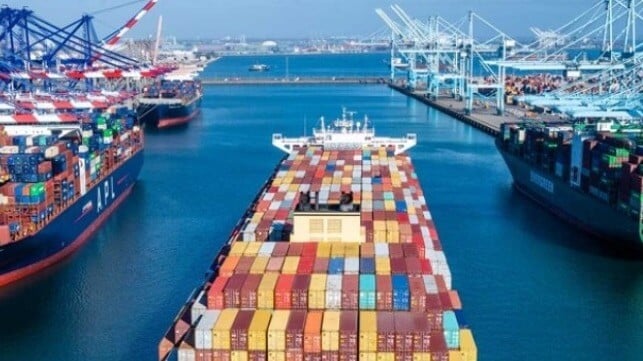Volume Surge Continues at SoCal Ports as They Watch East Coast Developments

Southern California's two large ports, which are also the largest in the United States, each reported an ongoing surge in volumes during August and an expectation that volumes will continue to be strong. The ports believe that some cargo has been diverted while persistent strong consumer sales, a positive economy, and efforts to manage by importers, are all contributing to the increases in volumes.
Both ports had strong July results and even stronger August volumes. For Long Beach, it was the busiest month in the 113-year history of the port. Los Angeles came in just below its historic threshold of 1 million TEU reporting what it called “the busiest non-pandemic month ever at the port.”
The port executives varied on their views of the factors contributing to the continued strong increases in import volumes. They agreed it is a strong peak season while emphasizing that the ports have been successful in managing and have the capacity for further increases.
“Cargo diversions and concerns about upcoming tariffs are creating a busy peak season for us,” said Port of Long Beach CEO Mario Cordero. “We’re prepared for the uptick in shipments and continued growth through the rest of the year with a dedicated waterfront workforce, modern infrastructure, and plenty of capacity across our terminals.”
Container volume in Long Beach was up overall 34 percent to nearly 914,000 TEU. Imports were the strongest factor up 40 percent versus a year ago and 5 percent over July.
Gene Seroka, the Executive Director for the Port of Los Angeles, and George Goldman, the President and CEO of the North America division of CMA CGM, during a press briefing, conceded that there was “some front loading” and some “reallocation of volume” by customers due to the issues in the East Coast labor negotiations. They however also cited the Red Sea diversions and other factors saying the market remains very dynamic. They would not confirm that customers had started shifting cargo fearing a strike by the International Longshoremen’s Association in less than two weeks at U.S. East and Gulf Coast ports.
Los Angeles highlighted that it handled 97 containerships in August including a record 32 each with a capacity above 10,000 TEU. Imports topped 500,000 TEU for the second month in a row with imports up nearly 18 percent over last year and nearly 2 percent over July.
Seroka said he expects that the port will again handle more than a total of 900,000 TEUs in September noting they are already off to a strong start. He thinks there is still some momentum left in an already exceedingly strong peak season.
“Some of the cargo arriving now is replenishing inventories even beyond the year-end holiday season. Combined with a steady flow of manufacturing parts and components, we should continue to see elevated volume in the near term,” said Seroka.
Historically the Port of Los Angeles had a capacity of around 1 million TEU with Seroka saying they are currently running at 80 percent of capacity. He acknowledged a “micro spike” in dwell times at the railroad connections saying they were addressing those issues but that overall, the cargo velocity remains positive in the Prot of Los Angeles.
With recent advancements in technology and management cargo along with and working from lessons learned, he projects the Port of Los Angeles now has a capacity of up to approximately 1.2 million TEU per month. He points to the recent successes in managing the latest surge and is confident they will be able to handle continued growth.
For now, the Port of Los Angeles and CMA CGM said it is “wait and see” while managing the issues as they arise. They are hopeful the employers and ILA will return to the negotiations saying that even a one-day disruption would be too many in a very dynamic supply chain. They said it is critical to have all ports working efficiently as the U.S. economy continues strong.
